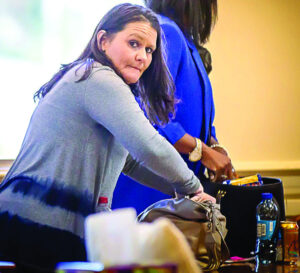It’s time again to think pink
Abreast cancer diagnosis doesn’t affect just the patient. It causes sorrow and fear for all the people who know the mother, grandmother, sister or wife confronting the disease.
The statistics on breast cancer are grim, but trending in the right direction. An estimated 316,950 women and 2,800 men will be diagnosed with invasive breast cancer in 2025, and the illness will kill 42,680 women and men, according to the American Cancer Society. An estimated 4,500 Alabama women will be diagnosed in 2025, and 720 will die.
And there are other positive signs. The American Cancer Society reports, “Breast cancer death rates have been decreasing steadily since 1989. The decrease in death rates is believed to be the result of finding breast cancer earlier through screening and increased awareness, as well as better treatments.”
While breast cancer death rates continue to decline, the statistics are still startling. About 1 in 8 women are expected to be diagnosed with invasive breast cancer in their lifetime. As of January 2025, over 4 million breast cancer survivors live in the U.S.
Coloring this month pink helps various organizations raise money for research and improved treatments that will help to continue decreasing mortality cases from illness.
More importantly, having a breast cancer awareness month provides a chance to educate women about how they can lessen the likelihood they’ll get breast cancer but detect it early if they do. There are some risk factors for breast cancer that are out of a woman’s control, including family history, her gender, age and ethnicity. Most breast cancer is found in women 55 and older, for instance. And women are much more likely to get breast cancer than men.
Recommendations for detecting breast cancer vary based on a woman’s risk factors and age but finding the disease early and getting treatment clearly leads to better outcomes.
The American Cancer Society says women who get regular mammograms are more likely to have their breast cancer found early, less likely to need the most aggressive treatments and more likely to be cured.
The latest recommendations call for women at average risk of breast cancer to consider starting regular mammograms between the ages of 40-44 before getting them annually from 45 to 54. Women 55 and older may need them only every other year.
So as the weather cools and fall arrives this month, take the opportunity to learn more about breast cancer. Women can make lifestyle changes that make them less vulnerable to the disease. They also can make sure to talk to their medical providers about screening.
All of us can consider donating to an organization or project that helps fight breast cancer, whether it involves research, purchasing new equipment or making detection accessible to those with limited resources.
Think pink in October. Think prevention. Think early detection.






